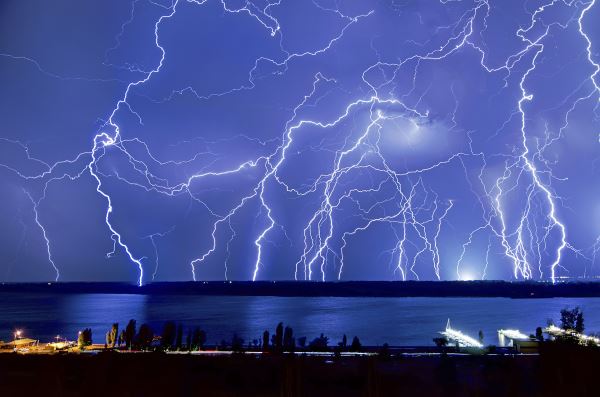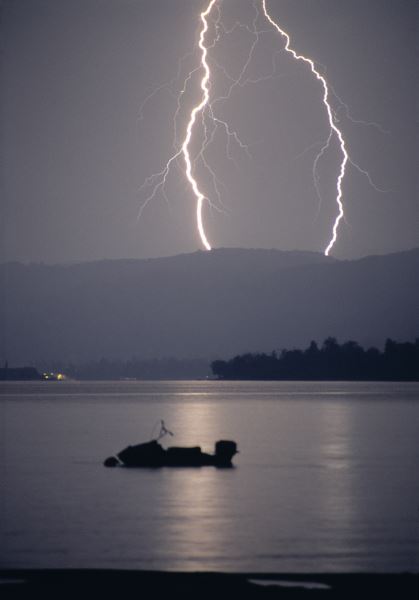
With the hottest season just officially gracing the scene on June 21st, keep a mindful eye on brewing summer storms and the dangers they can add to houseboating or zipping about on a runabout. St. George News gives some excellent recommendations for staying mindful about what to do should lighting crack across the sky while you’re on the water.

First of all, they point out that it's helpful to know what you're up against. BoatU.S. actually studied a decade’s worth of lightning-related insurance claims filed by boaters over the years and found—as you could guess—that the results suggest different likelihoods of getting struck depending on the size of your vessel. They found that, while monohull sailboats with their tall masts obviously take the lead, boats 40 to 65 feet long have 6 chances per 1,000 of being struck. Pontoon boats, bass boats, and runabouts came in at a 0.1 chance per 1,000, while overall the national average for all vessels is a 0.9 chance per 1,000. What areas tended to be hottest where lightning strikes occur? The thunderstorm hotspot hugs around Louisiana, Mississippi, Florida, Alabama, South and North Carolina, to name a few. Regardless of where you live, what are some ways to prevent such a mishap from occurring while you're out on the water?
The folks at St. George News candidly refer to the University of Florida’s “Boating Lightning Protection” by William Becker, which is also inline with advice given by BoatU.S. and is smart to keep in mind.
Firstly, get everyone out of the water and reel up any fishing lines. Run for protection if you can (e.g. a car or enclosed building), rather than remain sitting on the water. If lightning has already started up, then keep clear of the shoreline (which typically has taller objects like trees that could tempt a lightning strike) and get ready to bunker down. If you’re in a runabout or other open boat, keep all parts of your body inside and stay low. If you’re on the houseboat, get inside and turn off everything electronic. Keep yourself physically distant from everything you turned off, even the VHF radio. If your radio antenna or other protruding devices aren’t part of a lightning protection system, lower them or remove them.
 And finally, keep one eye on weather reports and the other on the skies. The National Geographic warns that if thunder is audible, you’re within striking distance of a storm. They also advice that you wait for at least half an hour after the last clap of thunder before you head back outside. Like William Becker is quoted as saying, "When thunder roars, go indoors." For more tips on travel safety, check out Crams' guide here.
And finally, keep one eye on weather reports and the other on the skies. The National Geographic warns that if thunder is audible, you’re within striking distance of a storm. They also advice that you wait for at least half an hour after the last clap of thunder before you head back outside. Like William Becker is quoted as saying, "When thunder roars, go indoors." For more tips on travel safety, check out Crams' guide here.
What's the upside of summer storms and the necessary cautions that come into place? The beautiful aftermath sometimes blesses us with gorgeous vistas, like this double rainbow captured by Adam Smith with his 1995 Sea Ray 175 sport boat in the foreground. After the thunder is done roaring and you've waited the safe amount of time, go back outdoors and take some summer pictures. Stay safe, keep a smart head on your shoulders, and you won't be dissapointed by the outcome.
Last photo credited to Adam Smith.